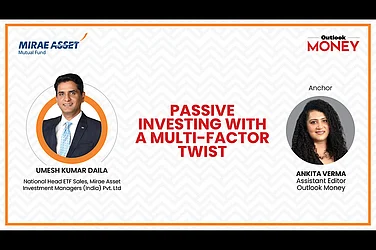In today’s hyper-connected world, change doesn’t just knock on your door—it kicks it wide open. The pace of innovation, geopolitical shocks and shifting economic tides are transforming how we think about investing. Take Artificial Intelligence, for example. Just a few years ago, it was a futuristic concept reserved for technology conferences. Now, it has the power to send stocks soaring to stratospheric heights almost overnight. But beware—what rises fast can tumble even faster.
Then there’s gold. Once thought to be mired in a years-long slump, the bullion recently staged an impressive comeback. After languishing in a consolidation phase that began in early 2013 and stretched nearly five years, gold has burst back into the spotlight. In a stunning twist few foresaw, it eclipsed its inflation-adjusted peak from over 45 years ago in 2025, propelled by growing fears over the US economy’s future. Anxiety over inflation and geopolitical instability triggered a blistering three-year rally, pushing prices close to an all-time high of $3,650 per ounce and breaking more than 30 nominal records in the same year.
But here’s the thing about asset classes: their performance isn’t written in stone. It is a story that evolves annually, shaped by the economic cycle’s unpredictable turns. The BSE Sensex, India’s flagship equity index, emerged as the top performer in three of the past ten years, delivering returns ranging from a modest 4% to a dazzling 29%. Gold outpaced everything else in five of those years, yielding between 5% and 23.8%. Bonds had their moment too, shining brightest in 2015 and 2016 with steady returns of 8.6% and 12.8%. Yet 2015 proved humbling for both gold and equities, as they registered negative returns in unison—a rare but telling event.
So, what does this kaleidoscope of performance teach us? It shows us that no single asset can reign supreme forever. Equities, with their promise of long-term growth—delivering around 15–16% annual returns over the last two decades—remain the wealth creators of choice, despite bouts of volatility. Bonds provide a reliable, stable income stream and act as a ballast when the equity rollercoaster gets too wild. Meanwhile, gold—the evergreen favourite of Indian investors—continues to oscillate between consolidation and boom, standing as a time-tested hedge against inflation and global turbulence.
This unpredictability has fuelled growing interest in multi-asset funds. Think of them as a one-stop solution for the modern investor: a smart way to diversify—without the headache of constantly guessing which asset class will lead next. By blending equities, bonds, gold and sometimes derivatives, these funds aim to capture the upside of each while smoothing out bumps along the way. A typical multi-asset fund keeps at least 10% invested across three or more asset classes, while many manage net equity exposure between 65% and 75%—striking a balance that optimises both returns and tax efficiency. In addition, tools such as covered calls help harvest extra yield even in range-bound markets.
The greatest strength of a multi-asset fund lies in its disciplined approach. It spares investors the difficult—and often futile—task of predicting market winners, focusing instead on achieving the optimal asset mix. Numerous studies confirm that asset allocation—not market timing or stock-picking—accounts for more than 90% of portfolio performance over the medium to long term.
Model-driven allocation in multi-asset funds delivers multiple benefits, such as capital appreciation through equities, steady accrual income from debt, and inflation and currency depreciation hedging via gold. Crucially, this strategy reduces dependence on any single asset class by selecting assets with low or even negative correlations—that is, how asset returns move in relation to each other over time. Correlation values range from +1 (perfect correlation) to -1 (perfect inverse correlation). For example, equities have shown modestly negative correlations with bonds and near-zero correlations with gold. These low or negative correlations enable strong diversification without significantly sacrificing returns.
In a world where certainty is fleeting and volatility is the norm, multi-asset funds offer a pragmatic path forward—diversification reimagined for the 21st-century investor. Because when the only constant is change, it pays to hedge your bets.
Disclaimer: The Views are Personal and not a part of the Outlook Money Editorial Feature













